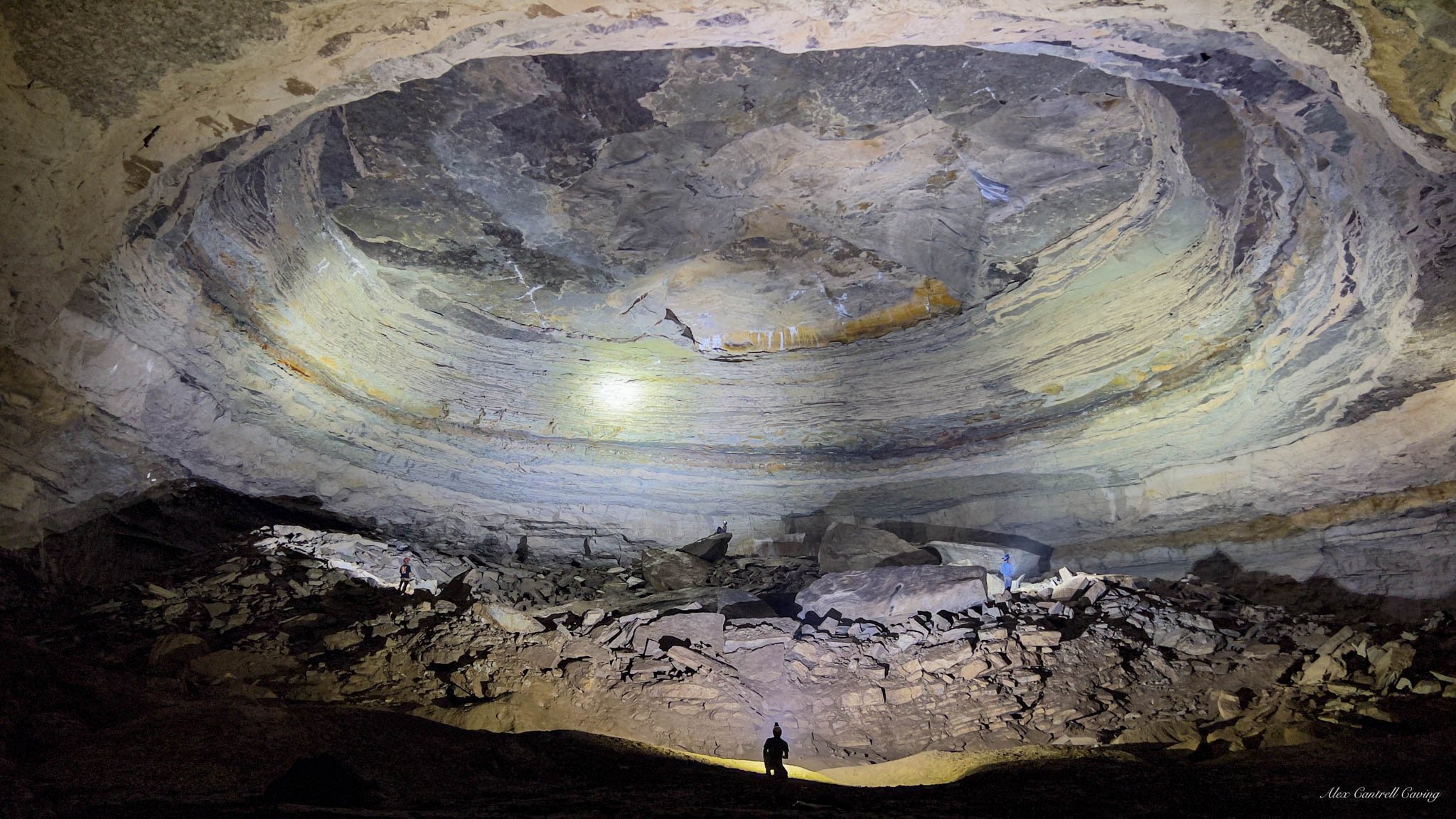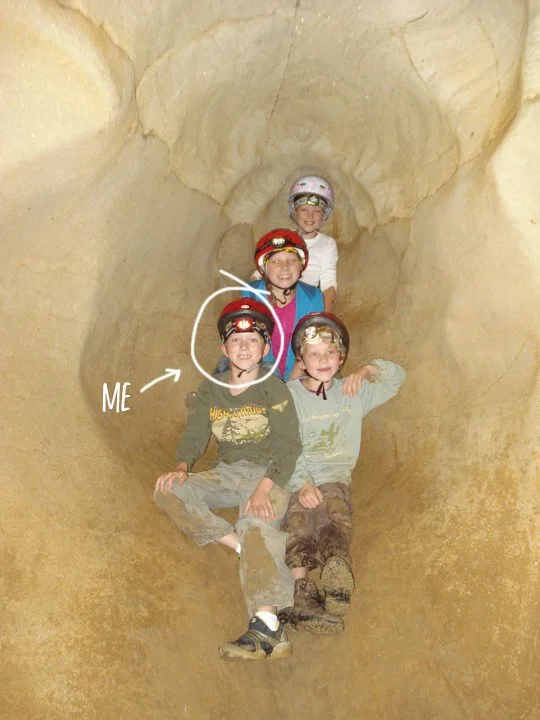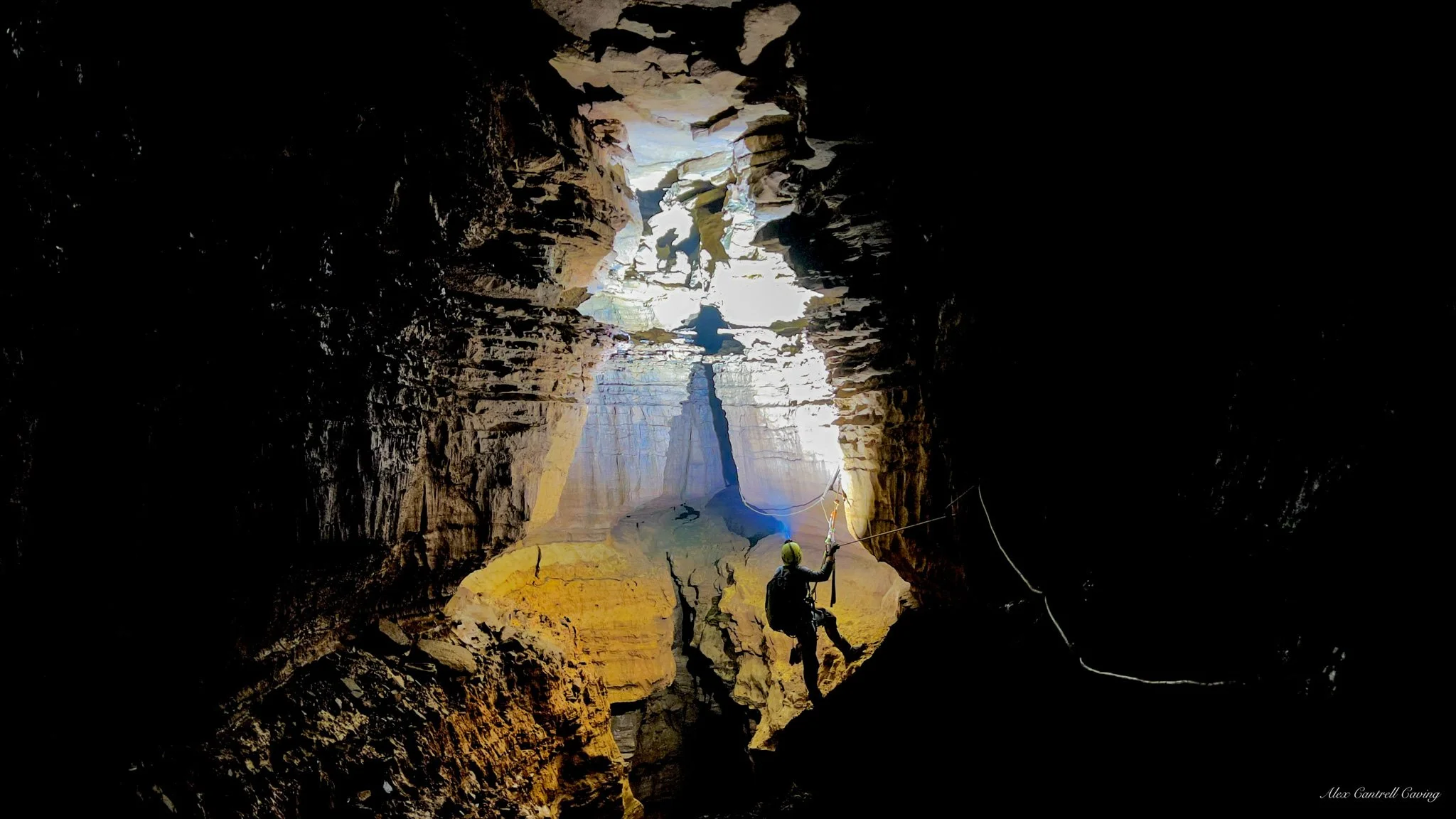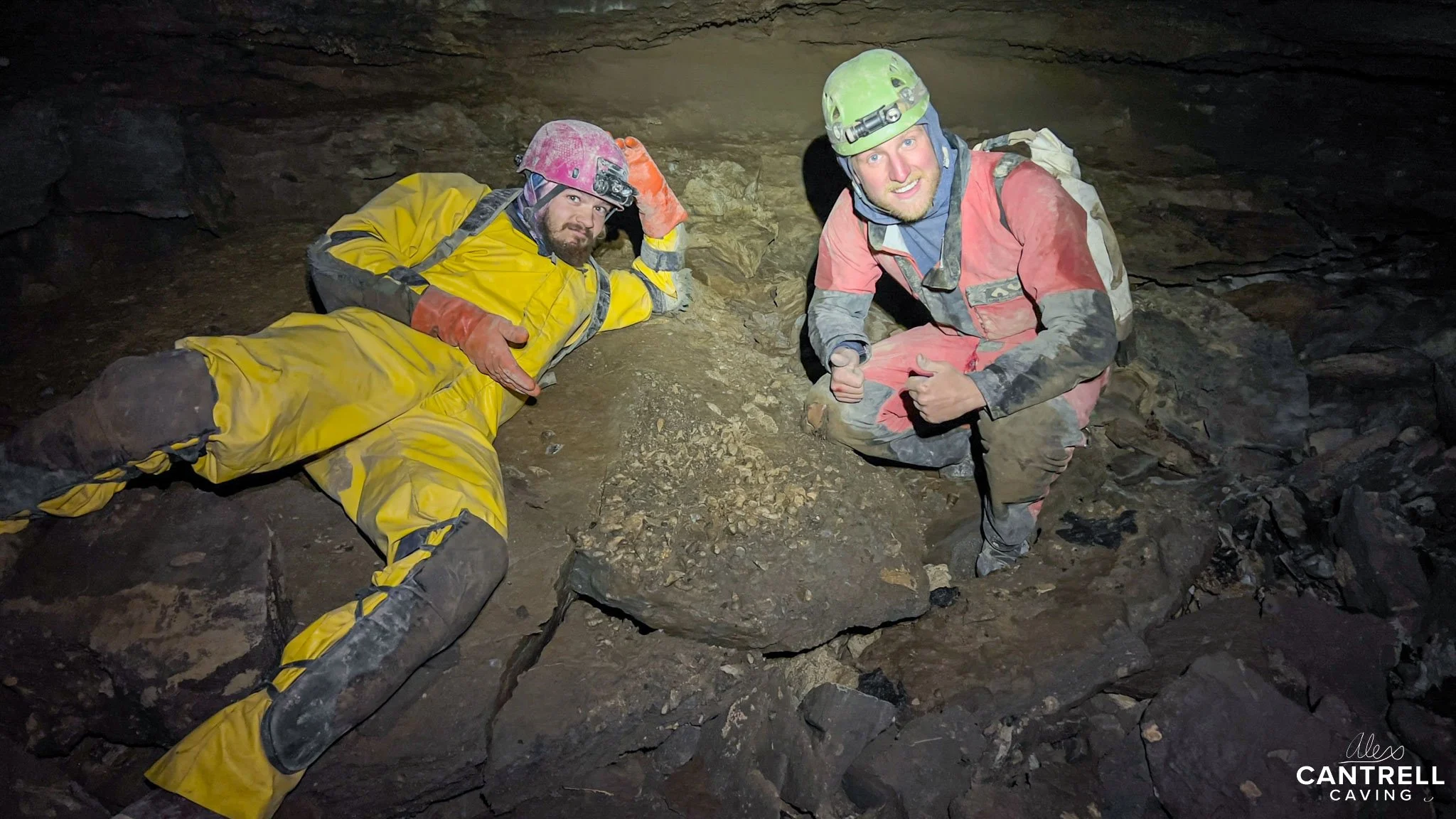
intro to caving
How I Got Into Caving
Everyone finds caving a little differently.
Maybe you discovered it through YouTube — maybe even one of my videos — or maybe you come from a background in hiking or climbing and want to explore what lies beneath. However you got here, welcome!
For me, it started in Jackson County, Alabama — right in the heart of the TAG region (Tennessee, Alabama, Georgia), one of the most cave-dense areas in the U.S. Growing up, my family had hunting leases and farmland, and we’d often stumble across caves. I was the kid who always wanted to crawl in. That curiosity turned into a lifelong obsession.
In high school, I started learning vertical caving. One of my best friend’s dads had a background in rope rescue, and he helped us learn to use rope systems safely. We started exploring pits and caves together, and I fell in love with the vertical side of caving early on.
My introduction to grottos — local caving clubs — wasn’t perfect. At first, I had a rough experience with them. Like many newcomers, I ran into groups that were cliquey or had older members who weren’t very welcoming to younger cavers and often acted as gatekeepers. It pushed me away from the grotto scene for a while. Luckily, I had responsible friends with experience who kept me going.
In the past few years, I’ve reconnected with grottos — and I’m really glad I did. This time around, I found the right people. Some of my strongest connections, most insane expeditions, and biggest learning moments — from mapping to leading project trips — came through grotto members!
Before You Start:
Try a Show Cave First
Before diving into wild caving, I highly recommend visiting a show cave first. These are developed caves open to the public, usually with guided tours, handrails, and lights.
Why? Because being underground isn’t for everyone. Some people discover they’re uncomfortable with the darkness, humidity, stillness, or confined spaces. A show cave is the best way to find out if caving is something you genuinely enjoy before you contact a grotto or jump into a wild cave trip.
How You Can Start Caving
If you’re still excited to go deeper (literally), here’s where to begin:
Find your local grotto.
Caving clubs — called grottos — are the gateway into the community.
➔ Use the NSS (National Speleological Society) Grotto Map to find yours
Don’t go alone.
Always go with experienced cavers, especially early on.
Use proper equipment.
Hardware store rope, boat rope, and basic climbing harnesses are dangerous and NOT rated for caving.
➔ Check out the Gear Guide
Your must-have beginner kit includes:
Helmet (non-negotiable)
Three independent light sources
Tough clothing and decent footwear
Go on beginner trips.
Most grottos host trips specifically for new folks. These are great for learning the ropes — literally and figuratively.
Advance into vertical caving slowly.
When you’re ready, attend a vertical training day hosted by your grotto or another reputable group.
Learn to map.
Surveying is how exploration moves forward. If you find virgin passage, you get to map it, name it, and become part of the cave’s history.
Why Caving Matters
Caving is one of the last true frontiers of exploration.
There’s something deeply addictive about stepping into a place no human has ever seen — reading the walls, tracing the water, discovering fossils, or identifying rare formations. Every trip underground is a chance to better understand how the Earth works.
But beyond the adventure, caves matter — a lot — for our environment.
In many karst regions, cave systems directly feed the springs that supply entire towns with drinking water. Knowing where those caves are — and protecting their entrances — helps prevent contamination and keeps our water sources clean.
Caves also host some of the most unique and delicate ecosystems on the planet. Entire species of fish, insects, and salamanders have evolved in complete darkness — and many exist nowhere else on Earth. The biodiversity inside caves is fragile, and in some cases, completely undocumented. If we neglect these systems, we risk driving rare species to extinction before they’re even discovered.
And then there are bats — thousands of them. Bats use caves as roosting sites, and in turn, they help keep surface ecosystems in balance. They control insect populations, pollinate plants, and play a critical role in agriculture and forest regeneration.
Protecting caves means protecting everything that depends on them — including ourselves.
A Brief History of Caving
Humans have been exploring caves for millennia.
Prehistoric cave art in Europe dates back over 17,000 years! In the Americas and other parts of the world, indigenous cultures used caves for shelter, ceremony, and storytelling.
Modern caving as we know it — with ropes, mapping, and exploration — really took off in the late 1800s and early 1900s. Since then, national and international organizations have helped grow the community, science, and safety behind exploration.
In the U.S., the NSS (National Speleological Society) is the central hub.
In other countries, you can look into groups like:
British Caving Association
Australian Speleological Federation
UIS (Union Internationale de Spéléologie) — a global umbrella organization
No matter where you are in the world, there’s a cave club or community to get involved with.
FInal thoughts
This page is just a starting point.
If you’re serious about caving, start small, get the right gear, and surround yourself with people who care about safety, conservation, and community.
➔ For more on how to protect caves and yourself while exploring them, check out the Safety & Conservation page.
Quick Links:







